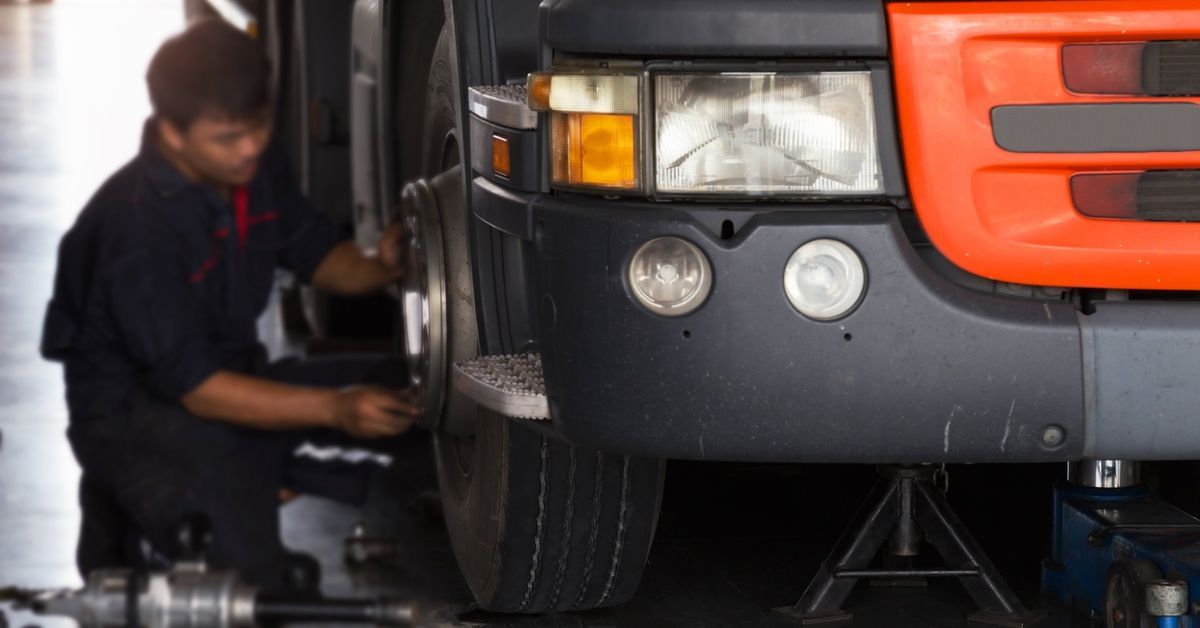How To Identify Worn-Out Semi-Truck Parts Before They Fail
Have you ever thought about how much downtime a broken part can cost you? Identifying worn-out parts before they fail is crucial for keeping your semi-truck safe, efficient, and on the road.
Failing parts can lead to unexpected breakdowns, hefty repair bills, and even dangerous situations on the highway. If you’re looking for better peace of mind while saving money, this article will guide you through how to make sure your vehicle is always ready to handle the demands of the job.
Signs of Wear and Tear To Watch Out For
Visual Indicators
Keeping a close eye on the physical condition of your semi-truck can prevent bigger issues down the road. Look out for cracks, leaks, or corrosion on critical parts like the engine, transmission, or fuel system. The damage might seem minor at first, but it could escalate quickly into major repairs.
Take a moment to check for uneven tire wear, as this can point to improper alignment or suspension problems. You may also notice rubber particles near belts or hoses, which could mean these components are starting to deteriorate and need a replacement.

Unusual Noises
Strange noises are often your vehicle’s way of saying something is wrong. Grinding, squealing, or knocking sounds can indicate problems with brakes, engine parts, or suspension systems.
For example, a grinding sound when braking might signal that your brake pads are worn and need attention. Ignoring these noises could turn an inexpensive fix into a costly repair, so it’s essential to investigate them as soon as they arise.
Decreased Performance
A noticeable drop in performance is another red flag that you shouldn’t ignore. Reduced fuel efficiency, unexpected power loss, or difficulty shifting gears are all signs that your semi-truck may not be operating at its best.
These symptoms can stem from issues like a clogged air filter, failing fuel injectors, or transmission troubles. Addressing these problems early will help your vehicle run more efficiently and save money on fuel and future major repairs.
Warning Lights
Dashboard warning lights aren’t just there for decoration; they alert you to potential problems in your vehicle. Brakes, the engine, and other critical systems have built-in sensors to detect malfunctions.
When a warning light appears, it’s essential to act promptly. Ignoring these alerts can lead to further damage and potentially leave you stranded on the road.
Handling Issues
If your semi-truck feels different when driving, such as unusual vibrations, pulling to one side, or difficulty steering, it’s time to investigate. These symptoms usually mean there are issues with your suspension, alignment, or steering system.
Consistent handling problems can impact your ability to drive safely, so they shouldn’t be overlooked. A thorough inspection can ensure the truck stays stable and responsive while on the highway.
Gradual Leaks
Spotting leaks beneath your truck is a clear indication that something needs attention. Signs of oil, coolant, or air leaks could mean that seals, hoses, or components like the radiator are wearing out.
Addressing these leaks early can prevent significant problems like the engine overheating or loss of critical fluids. Regular checkups will help you detect these issues before they develop into more costly complications.
Tools and Techniques for Inspections
Essential Tools for Routine Checks
Having the right set of tools makes inspections much easier and more effective. Tire pressure gauges and tread depth gauges are great for assessing tire health, helping you maintain grip and fuel efficiency. Hand-held diagnostic scanners can uncover potential engine or electronic issues before they escalate.
Flashlights are useful for illuminating hard-to-see areas, while jacks allow access to the undercarriage for closer checks. Brake lining gauges are particularly important for ensuring your braking system is functioning properly, providing safety and peace of mind.
Visual and Manual Inspections
While tools play a big role, visual and manual inspections are just as critical. During your inspection, take your time to look for worn-out hoses, cracks in belts, and signs of corrosion.
Walk around your entire vehicle, checking for uneven tire wear and inspecting mirrors, lights, and reflectors. An undercarriage inspection helps uncover damage or leaks that aren’t visible at first glance. The secret lies in being attentive to details—you never know which small issue could escalate if ignored.
Leveraging Professional Help
Sometimes, even the most thorough inspections need an experienced touch. Knowing when to involve professional technicians is key.
If an issue seems beyond your expertise, or if complex components like transmissions, suspension systems, or advanced electronics are involved, it’s best to consult a professional. They have access to specialized tools and the expertise to diagnose and fix intricate problems efficiently, keeping you confident in your truck’s reliability.
Maintenance Tips To Prevent Failure

Regular Maintenance Schedule
Sticking to a consistent maintenance schedule is fundamental to keeping your truck running smoothly. Follow the intervals recommended in your truck’s manual for oil changes, filter replacements, and routine inspections.
These intervals are designed to ensure optimal performance and prevent wear and tear from escalating into costly repairs. Regularly checking for signs of fluid leaks or unusual noises can also help catch potential issues early.
Rotating and Aligning Tires
Tires are critical for both safety and efficiency, so give them the attention they deserve. Rotating your tires spreads out wear evenly, which helps extend their lifespan. Aligning your wheels keeps your truck driving straight and reduces strain on the suspension system. Not only does this save you money over time, but maintaining your tires also keeps your driving experience smooth and your fuel consumption efficient.
Brake System Servicing
Your brakes are your most essential safety feature, so it’s vital to keep them in top condition. Regularly check brake fluid levels and look for signs of contamination. Replacing worn brake pads early prevents damage to other components in the brake system.
For trucks with air brakes, inspect the hoses and fittings to ensure everything is secure and free from cracks or leaks. Proactive brake care provides peace of mind when you’re out on the road.
Recordkeeping
Detailed recordkeeping might not seem exciting, but it’s one of the best tools for staying on top of maintenance. Logging every inspection, repair, and replacement helps you to track wear over time and spot recurring issues.
These records also act as a handy reference when planning future maintenance, ensuring you don’t overlook important components. Staying organized can save you from unexpected failures and keep your truck on the road longer.
When you're in need of a quick DIY repair, we'll provide you with the heavy-duty truck parts to get the job done. However, for more complex services and repairs, from engine care to maintaining electrical components, visit us at Trailer Tech.
We have a team of experienced technicians who are dedicated to providing top-notch services for your vehicle. Plus, as you continue to bring your semi-truck to us, we’ll also keep an eye out for failing parts, helping you identify small problems before they turn into big hits to your wallet.










